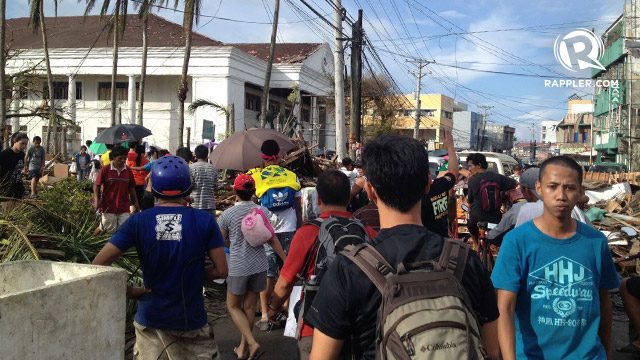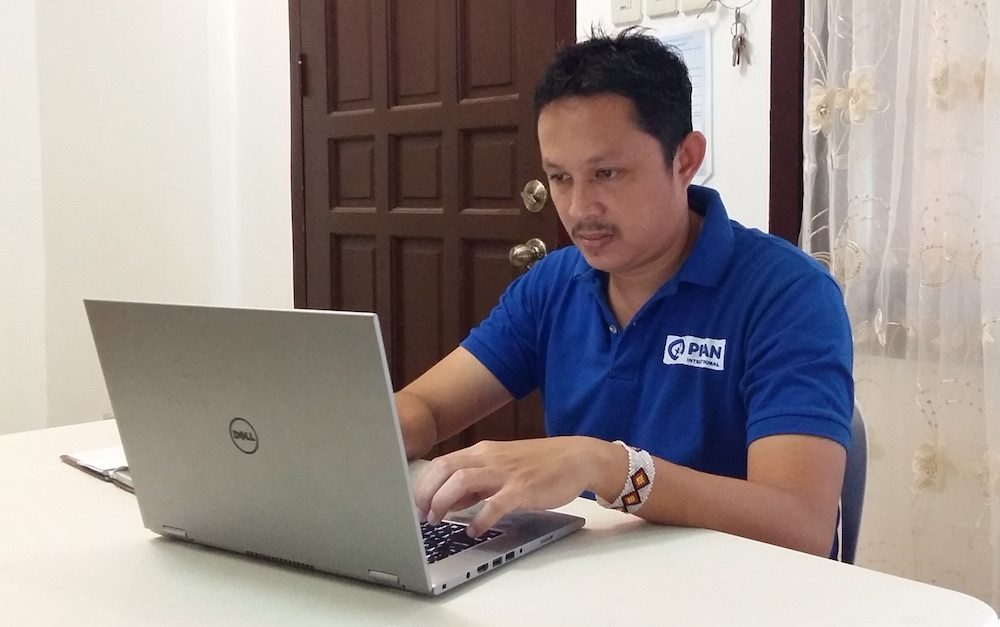SUMMARY
This is AI generated summarization, which may have errors. For context, always refer to the full article.

MANILA, Philippines – According to official records, the typhoon made the first of 6 landfalls at 4:40 am on November 8, 2013; it was a Friday, he clearly remembered. By Sunday evening, just two days after, Telesfloro Laplana was in Cebu, waiting to board a ship home.
The storm began as a tropical depression over the North Pacific Ocean, some 1,600 kilometers off the southeastern tip of Guam, where it was given the international name Haiyan. Three days later, on November 6, Haiyan was hurtling towards the Philippines at a speed of 30 kph. It was assigned the local name Yolanda.
By the time it left the country on November 9, Yolanda had left hundreds dead and thousands missing; the body count would later balloon to at least 6,300. With an estimated Php 93 billion in damaged property, Yolanda remains the deadliest and most destructive typhoon in Philippine history.
Teles, as he is known to those around him, grew up in Baybay, Leyte, just over 70 km southwest of Tolosa, where Yolanda made its second landfall. This was his home and everything in it – his house, his childhood, his family – was in the storm’s warpath.
So, when his ship docked in Leyte on the morning of November 11, he knew he had two missions: one, as the Manager for Disaster Risk Management of Plan International Philippines; and the other, as a family man.
The deadliest and most destructive
In his 12 years of disaster response work, Teles told me nothing has yet to top Yolanda in terms of destruction. While his family was thankfully safe, it was immediately apparent that they were just among the very few lucky ones.
Tacloban was unrecognizable. What used to be schools, stores, and houses were reduced to what he called a “deluge of debris.”
Even the pavements, he said, were ripped from their gravel base by the sheer force of the storm, exposing the sand and earth underneath.
In evacuation centers, stories of how people made it out alive are told hand-in-hand with stories of seeing their child washed away or of how they had to leave their friend’s body behind, under an unmarked makeshift grave.

As a relief worker, Teles said this loss is exactly what gets to you.
Tales of survival are heartwarming and triumphant, but against the backdrop of a city in ruins and mass graves, they can also feel wrong and unfair.
“That’s called secondary trauma,” explained Dr. Ma. Isabel Melgar, Director for Clinical and Community Services at the Fr. Jaime C. Bulatao Center for Psychological Services. “Trauma – you need not be directly exposed to it. Even if you just hear the stories or if you watch the news, you can also get traumatized.”
‘We are victims, too’
Relief workers go through a lot. On top of all the internalized pain and trauma, they have to keep a level head and find order amid the chaos. After all, they have a job to do and people to provide for.
“The greatest challenge during those times is to make order,” Teles says. “As humanitarian organizations, we have to figure out how to respond to the people’s need because everyone needs [help] but the budget is limited.”
The key, he adds, is to compartmentalize: at the end of the day, no matter how much more work needs to be done, sleep. Get some rest. Leave tomorrow’s problem for tomorrow.
But Teles can say this because he has 12 years of experience – and he wasn’t there when the storm hit. He didn’t get to hear the lashing of the wind or see the water creep up his legs; his fear wasn’t first-hand.
Local government units (LGU) and social workers, who were there during the storm, aren’t as lucky. They are essentially asked to work despite their own troubles, usually with almost no compensation; to help without receiving help.
“We are victims, too, sir,” Teles recalls a local LGU worker tell him. “When Yolanda came, she didn’t choose if you worked for the government or not. We were all [hit].”
Care for the caregivers
In the clamor for mental health support during natural calamities, most of the attention is focused on the victims – and rightly so. But in the process, those who provide relief response are looked over.
In the 2012 report Managing Stress in Humanitarian Workers, the Antares Foundation reveals that 30% of all international staff across 5 humanitarian agencies showed symptoms of post-traumatic stress disorder after their assignments.
In another study published the same year, which surveyed 212 aid workers across 19 NGOs, the prevalence of anxiety and depression symptoms jumped 8% and 9.1%, respectively, after field deployment.
On their end, Plan International pulls out any field employee after a month and requires them to take a 5-day leave to rest and unwind. Even something as simple as this, says Teles, is sometimes enough.
But a systemic problem needs a systemic solution. For starters, Teles recommends that the government and other organizations start investing more in programs specifically for the wellbeing of relief workers – “care for the caregivers,’ as he calls it.
“It could be structured activities for counselling or maybe [even] just taking a dip in the sea; just a simple get-together. Include it in the budget and increase its allocation.
Dr. Melgar agrees, but adds that the way we think about mental health should change. The problem in particular, she continues, is that it receives attention and resources only when there’s a crisis.
“But you need to allot resources for mental health throughout the year for several reasons: for prevention, for treatment, for self-care. It can’t be one-shot. There have to be sustaining programs.” – Rappler.com

Tristan Mañalac is a journalist who writes about science, health, and the environment.
.
Add a comment
How does this make you feel?
There are no comments yet. Add your comment to start the conversation.